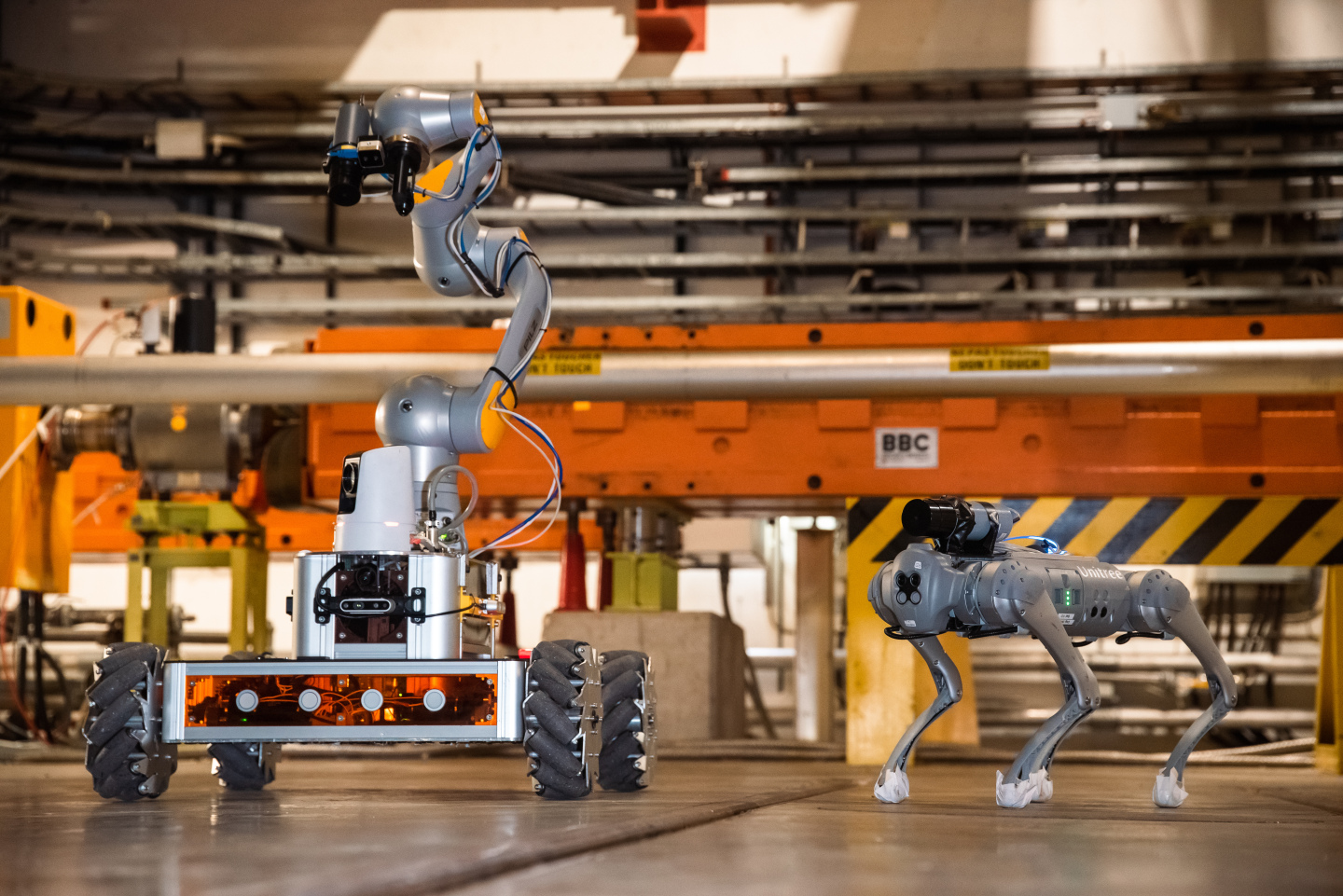Building 937 houses the coolest robots at CERN. This is where the action happens to build and programme robots that can tackle the unconventional challenges presented by the Laboratory’s unique facilities. Recently, a new type of robodog has entered CERN’s robot pool and successfully completed its first radiation protection test in the North Area.
“There are large bundles of loose wires and pipes on the ground that slip and move, making them unpassable for wheeled robots and difficult even for humans. We carried out a proof-of-concept survey with the Radiation Protection group in this area. There were no issues at all: the robot was completely stable throughout the inspection,” said Chris McGreavy, a robotics engineer in CERN’s Controls, Electronics and Mechatronics (CEM) group.
Until today, CERN’s family tree of robots included the modular CERNbot in different sizes and configurations, such as the CERNbotSPS, as well as the Train Inspection Monorail (TIM) and CRANEbot. They can carry heavy payloads like robotic arms and other tools but are limited when it comes to entering cluttered areas and moving over unstructured surfaces and on steps.
The team is now developing tools and advanced control algorithms for the robodog and its successors for long-term deployment in the experiment caverns, such as that of the ALICE detector, which are complex environments with metal stairs and narrow corridors designed for humans or, well, robots with legs. The current robodog is a commercially available product which CERN plans to use to explore possibilities to develop its own robotic solution in the future. In collaboration with the Experimental Physics R&D department, the CEM group is developing more customised solutions based on four-legged robot that will soon be able to manoeuvre throughout almost the entire cavern. These robodogs will be able to monitor the state of the caverns and their environmental conditions regularly. They can identify water or fire leaks and other incidents, such as false alarms, in a timely manner, all of which can significantly impact the operation of the machines in the caverns and tunnels.
Each robot developed at CERN is carefully crafted to meet unique challenges and to complement each other. For example, there are rails attached to the ceiling running along the 27-kilometre tunnel of the Large Hadron Collider (LHC). The TIM monorail robot uses these rails to move around the tunnel. While it is great for monitoring and interacting with the tunnels from above, CERN’s new small robodog can perform activities on the ground, especially under the beamline, where no robot could tread before so easily. It is envisaged to be integrated with the four monorail robots currently in operation in the LHC.
“The TIMs are used for monitoring the large distances of the LHC from above and can travel long distances without recharging. They can deploy the quadbots in local areas to get more information about specific places that the TIM cannot easily access,” explains McGreavy.
The robodog will be able to enter new dimensions of the caverns, unlike the previous wheeled, tracked or monorail robots – expanding the range of environments that CERN robots can navigate. The Beams department continues to dream up robots for CERN and engineer them into reality.

